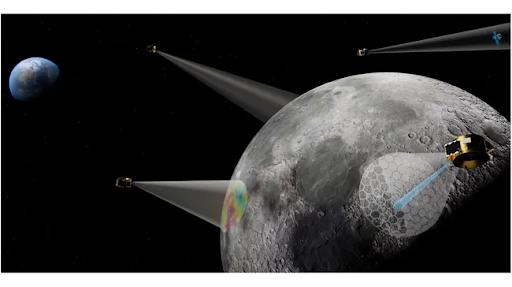Firefly Aerospace, a Texas-based company, announced on June 18, 2025, its plan to launch the "Ocula" lunar imaging service as early as 2026. This service aims to provide high-resolution ultraviolet and visible spectrum imagery of the Moon’s surface using a constellation of Elytra orbital vehicles equipped with advanced telescopes developed by Lawrence Livermore National Laboratory (LLNL). The telescopes can capture images with a resolution of up to 0.2 meters (8 inches) from an altitude of 50 kilometers, surpassing the 0.5-meter resolution of NASA’s Lunar Reconnaissance Orbiter.
Key aspects of the Ocula service include:
- High-Resolution Imaging: The telescopes onboard the Elytra spacecraft will be capable of capturing images with a resolution of up to 0.2 meters (approximately 8 inches) of the lunar surface from an altitude of 50 kilometers.
- Ultraviolet and Visible Spectrum: Ocula will provide imaging in both ultraviolet and visible light, which is crucial for identifying mineral deposits, such as ilmenite (an indicator of helium-3), and for mapping future landing sites with high fidelity.
- Initial Deployment on Existing Missions: The Ocula service will first be activated onboard the Elytra Dark vehicle, which will serve as a transfer vehicle for Firefly's Blue Ghost Mission 2, scheduled to launch in 2026. After deploying the Blue Ghost lander, the Elytra will remain in lunar orbit for over five years, continuously capturing imagery.
- Constellation Expansion: Firefly plans to expand its constellation of Elytra vehicles in lunar orbit, with another Elytra Dark scheduled for Blue Ghost Mission 3 in 2028, and more vehicles by 2030.
This expansion aims to enhance the Ocula service and enable faster revisit times for imaging. - Commercial and Government Customers: Firefly intends to license the data collected by Ocula to both government and commercial customers, offering a low-cost solution for lunar imaging.
- Applications: The data will be valuable for various applications, including lunar surface mapping, mineral detection, lunar reconnaissance, and space domain awareness in cislunar space. It will also support future human and robotic missions to the Moon and potentially extend to Mars and other planetary bodies in the long term.
This initiative positions Firefly Aerospace to be one of the first, if not the first, commercial providers of comprehensive lunar imaging services.

